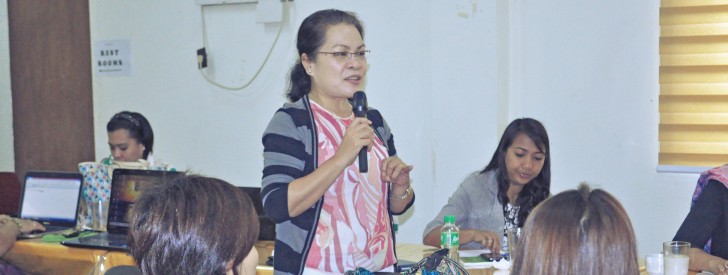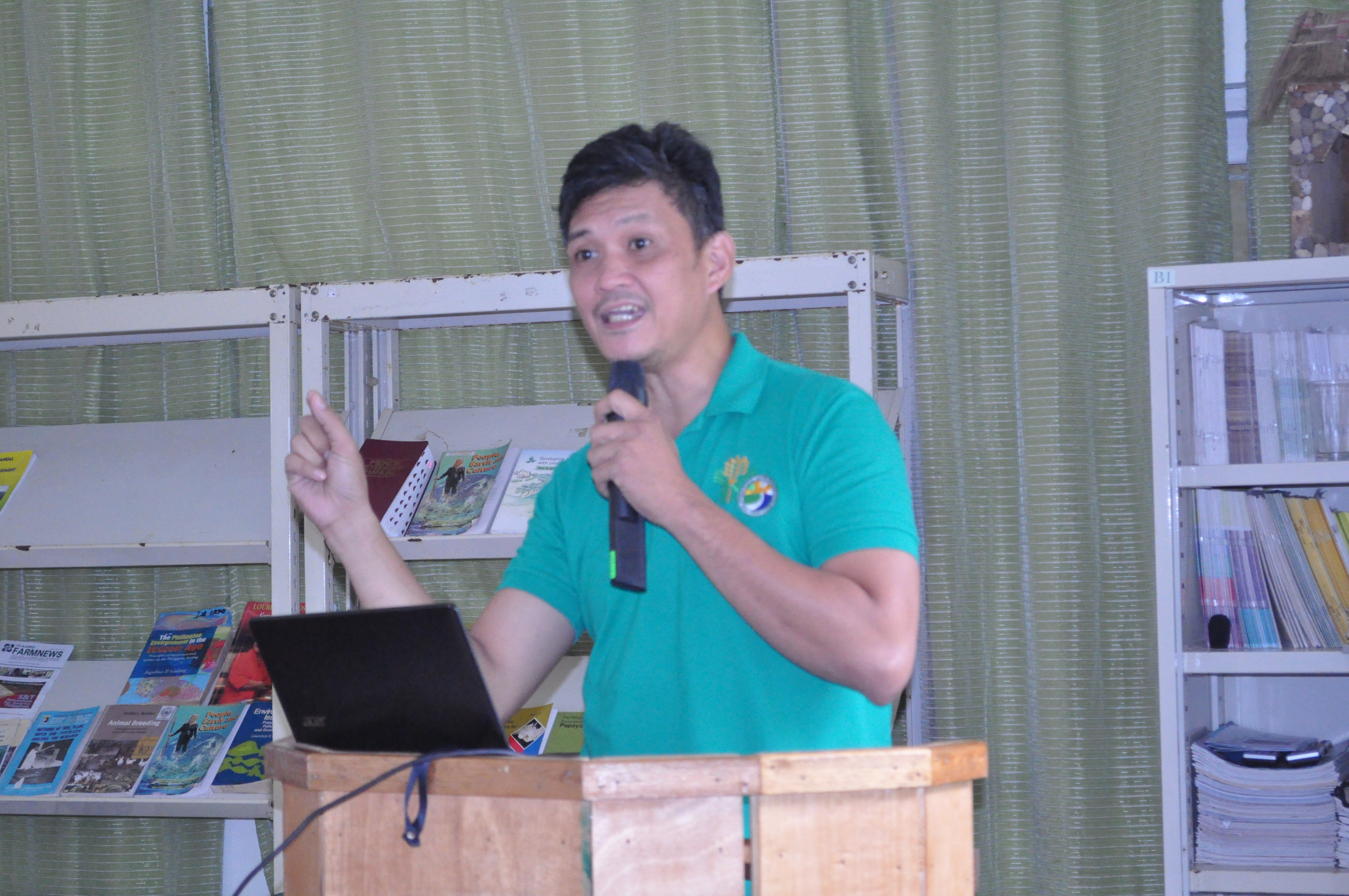 NPCO RBME Head Adamar Estrada clarifies some issues during the open forum with M&E officers
NPCO RBME Head Adamar Estrada clarifies some issues during the open forum with M&E officers M&E Unit strengthens teamwork in first coordination meeting for FY 2015
Basco, Batanes – Officers of the Monitoring and Evaluation (M&E) Unit gathered for the first quarter assessment last March 24 for North Luzon cluster, and a nationwide unit assessment last March 25. The meeting looked into the progress of the unit, including updates from each region and to further evaluate if the objectives of the program are being efficiently achieved. M&E representatives from the National Project Coordination Office (NPCO), Project Support Offices (PSOs) from all clusters and Regional Project Coordination Offices (RPCOs) graced the event which was held in the Batanes Experimental Station in this municipality.
Pointing out on the significance of the unit, NPCO Results-Based Monitoring and Evaluation (RBME) Head Adamar Estrada said, “As Monitoring and Evaluation officers and staff, it is our obligation to deliver information to our management for them to be able to have good and sound decisions. We monitor and record the performance of each component, as well as their implications to the implementation of the project.”
Estrada tackled the importance of the Memorandum of Agreement (MOA) as the starting point for every project. She also cited that certain subprojects in Mindanao failed to forge their MOAs because of such misconceptions about not having to comply with new MOAs for provinces under the Mindanao Rural Development Project (MRDP).
As of March 2015, 70 Memorandum of Agreements (MOAs) have been endorsed to the National Project Coordination Office (NPCO). A total of 27 MOAs nationwide are already in forged agreement.
Out of 57 Value Chain Analysis (VCAs), 22 are already approved, 13 are under review and 22 are currently under ongoing data gathering.
Provinces are still completing their Provincial Commodity Investment Plans (PCIPs), of which 37 are already approved.
“The PCIP is crafted in such a way that it backs up the Value Chain Analysis (VCA) and the Expanded Vulnerability and Suitability Assessment (E-VSA). These two scientific tools are where PCIPs must be based on,” said Estrada.
Roughly four months after PRDP was declared effective, 12 infrastructure subprojects are already under implementation, 143 are under preparation and 110 are under procurement. 36 enterprise subprojects already have proponent groups, two of which have been given the No Objection Letter 1 (NOL1).
In Visayas, 38 small livelihood projects were proposed in support to families and communities devastated by super typhoon Yolanda. Four have received the NOL1, all coming from Region 6.
Bidding failures, delay in the procurement process, lack of staff, need for project IDs for easier tracking of subprojects, selection of proponent groups and more are among the issues raised in the meeting.
NPCO Social Environmental Safeguard (SES) Unit Head Angelita Martir meanwhile introduced the Grievance Redress Mechanism Feedback (GRMF). The GRMF is a project management element that aims to seek feedback from beneficiaries and resolve complains on project activities and performance. Through public awareness campaigns and trainings, PSOs, RPCOs and LGUs intend to give the public awareness of the GRMF to increase the efficiency of both pre-implementation and implementation of PRDP projects.
NPCO Monitoring and Evaluation (M&E) Alternate Unit Head Jourvin Barrera also underscored further efforts in building a web-based M&E system including the Data Capture Forms (DCFs) and the MIS web-based platform.
Estrada further stressed on the vital roles of the unit. “Here at M&E, we want to do the right things, and we want to do it the right way,” she added. (Kayla Arceo)

